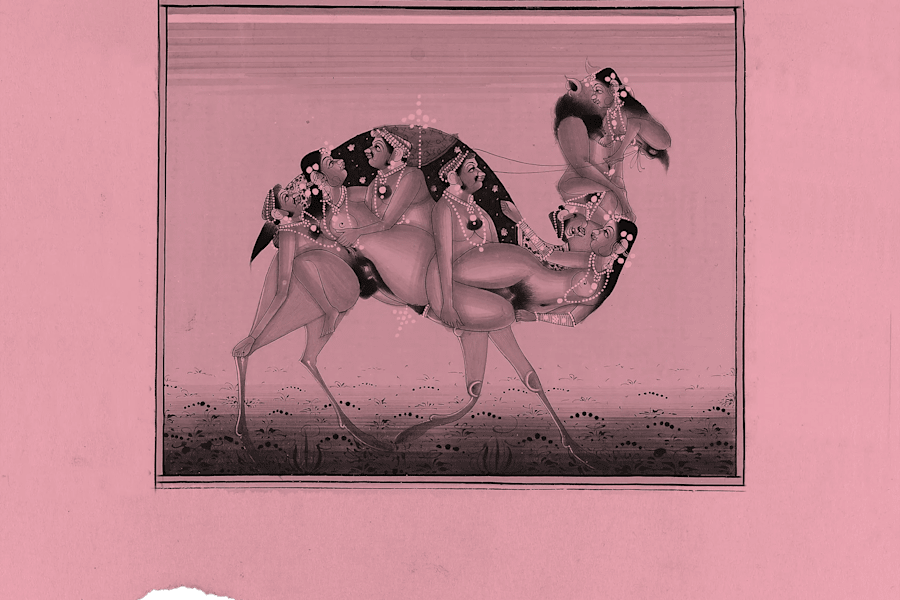
It’s the shift from simply noticing someone else to recognizing their freckles as your own. Have you walked the boundless expanse of intimacy in friendship or romance? Follow along as Marlowe Granados maps it out.
How do we experience intimacy in its limitless forms? What does it feel, look, taste, sound like to truly take someone in over time?
The path that takes a person from noticing to knowing is intimacy’s most unsung pleasure. To notice and observe things about someone is to give that person a quiet, undivided attention—taking in their qualities and holding them up to the light. Sometimes this is a person’s laugh, a fidgety hand, or a body’s fragrance. Sometimes it is as simple as the tenor of their voice.
Like an observant lover, the painter will think of the fine lines of her subject’s hands with unwavering consideration. For me, this kind of intimacy braids two people together. At its height, it can often feel like another body is a continuation of your own. I’ve looked down at someone’s freckles and felt they were markings I have known as mine. Knowing another’s body as one’s own carries a resonance we can all recognize. There is a reason that televised clip of Princess Margaret picking a piece of lint off Peter Townsend’s lapel revealed their love affair to the public. A royal scandal spawned from the smallest of intimate gestures, and in a way the most romantic.
When I say from noticing to knowing, I am describing the feeling of when you meet someone new and begin to understand them. The observations you’ve slowly collected begin to illuminate the person in front of you. The longer you know them, the more knowledge you gather. The more they are yours. People speak of love languages, but these are less specific. If you’re willing and committed, learning the language of one particular person can last a lifetime. This process is present in the best kinds of romantic relationships, of course, but the stretched-out years of friendship are where this phenomenon perhaps most easily reveals its depth and complexity.
I think of Mary McCarthy writing about her close friend Hannah Arendt after she’d passed. “She had small, fine hands, charming ankles, elegant feet […] You had only to see her on a lecture stage to be struck by those feet, calves, and ankles that seemed to keep pace with her thought.” Later, McCarthy tells us of Arendt’s preferred breakfast, “a boiled egg some mornings, a little ham or cold cuts, toast spread with anchovy paste.” Of all the writing on Arendt, only an intimate friend could think to mention her ankles or remember her taste for anchovy paste. Beyond her famous intellect and far-reaching ideas, Arendt is remembered by McCarthy in these smaller, precious ways.
In whatever kind of relationship, the intimacy between two people will ebb and flow over the years. Romantic partnerships often suffer under this pressure, the judgment of the right or wrong intimacy, or the correct amount of affection. But friendship has a kind of slow-churned flavor and dexterity well suited to intimacy’s latent stages. There will be times you retreat from those closest to you, and they from you. There will be moments we are unwilling to evolve, or evolve together, but time forces us on anyway. We are shifting tectonic plates, moving towards and away from each other. When you regain that closeness after time apart, a new affinity will be waiting. Intimacy is limitless because of our expanding nature—because there is always more ground to cover with someone you love.
Related Articles

Come, let us drool together.
That shared moment of communal lust in the group chat is a precious thing. Aaron Ewards tell us why.

How deep can a kiss go?
Two psychoanalysts discuss confronting the contemporary abyss of intimacy.
